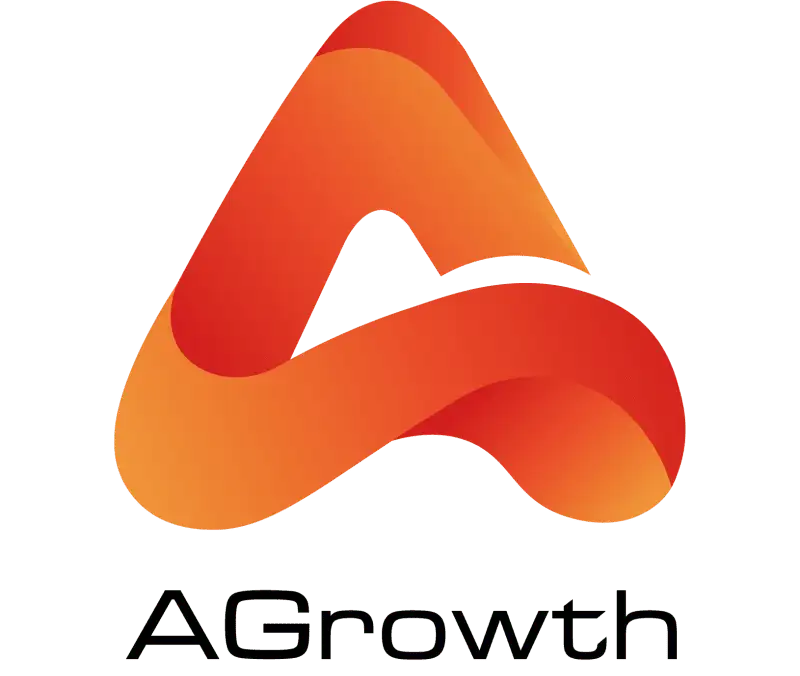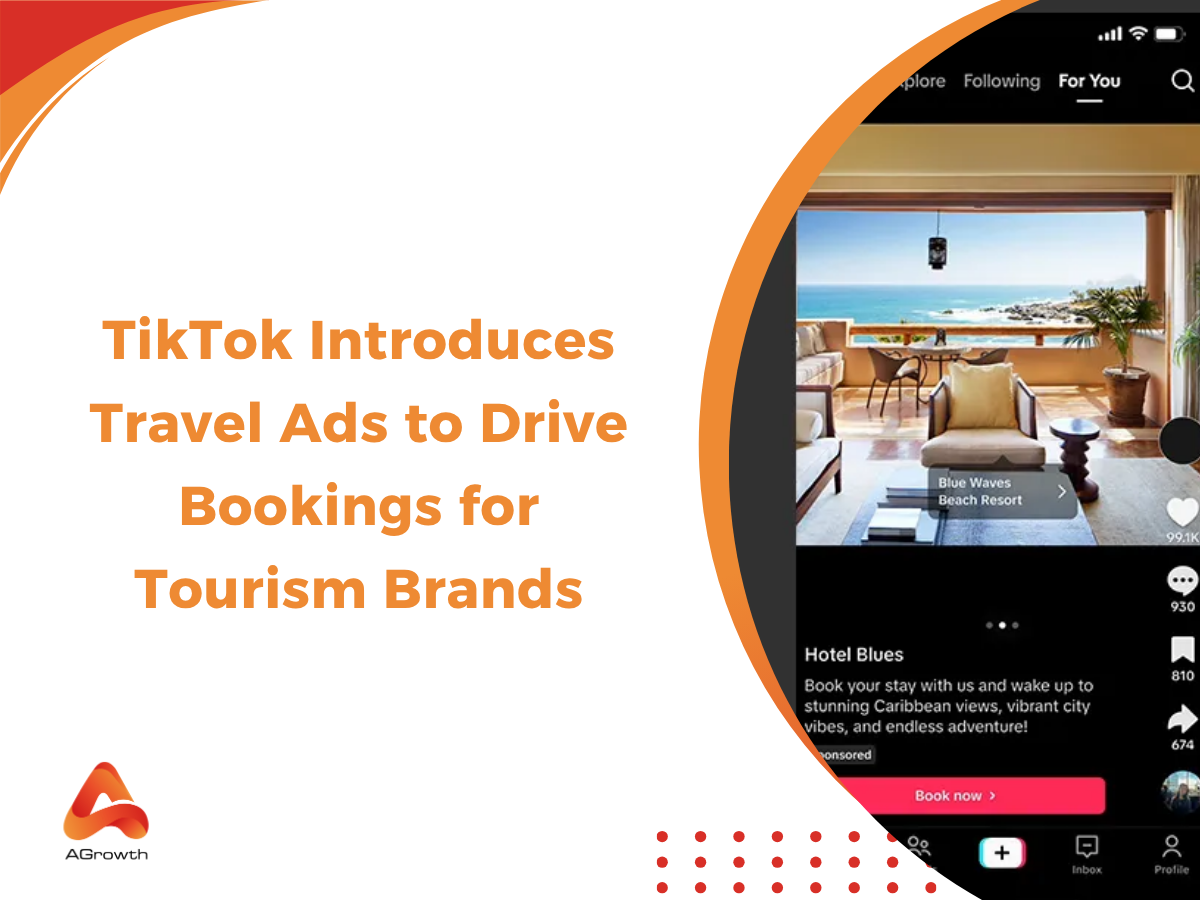
Table of Contents
What Are TikTok Ads? A Beginner’s Guide to Advertising on TikTok in 2025
In today’s fast-moving digital landscape, capturing attention is no longer just about being present; it’s about being relevant, entertaining, and timely. That’s exactly where TikTok Ads shine. As one of the fastest-growing social media platforms globally, TikTok has revolutionized how people consume content and how brands market themselves.
In this comprehensive guide, we’ll explore how TikTok advertising works, the types of ad formats available, how to set up campaigns using TikTok Ads Manager, what kind of targeting you can do, how much TikTok ads cost in 2025, and other useful information to help you can expand and grow your business on TikTok successfully.
What are TikTok Ads?
TikTok Ads are paid promotional content that brands and advertisers create to reach TikTok users on the platform. These ads appear in various placements, including the For You feed, the Discover page, or as branded hashtag challenges. The goal of TikTok Ads is to drive engagement, conversions, and brand awareness through short-form video content that resonates with the platform's highly active audience.
Unlike traditional digital ads that can feel intrusive or out of place, TikTok Ads are designed to blend naturally with user-generated content. This native advertising approach allows businesses to tell stories, showcase products, and build relationships in a more authentic, entertaining way.

What are features of TikTok Ads?
TikTok’s advertising ecosystem offers more than just video placements, it comes equipped with a wide range of built-in features designed to help brands create, deliver, and analyze campaigns efficiently. The core features of TikTok Ads are as follows:
Creative center & smart video tools
TikTok offers a Creative Center where marketers can access top-performing ads, trend data, and AI-powered creative suggestions. Tools like Smart Video and Video Templates simplify content creation for businesses without in-house production teams.
TikTok pixel and events API
For performance tracking and optimization, TikTok provides a robust conversion tracking suite. The TikTok Pixel allows advertisers to monitor user activity on their site (like purchases or form fills), while the Events API provides more advanced server-side tracking.
Smart performance campaigns (SPC)
A feature designed for advertisers who want automation, SPC uses machine learning to handle targeting, bidding, and ad delivery optimization. It’s especially helpful for lead generation or conversion-based campaigns.
Creative optimization and A/B testing
TikTok Ads Manager includes built-in tools to test multiple ad creatives, helping you identify what resonates best with your audience. You can also automate creative performance analysis to save time and reduce costs.
Real-time analytics dashboard
Monitor ad spend, impressions, engagement, and conversions through TikTok’s live reporting interface. You can segment by audience, ad group, or time to uncover deeper performance insights.
Third-party integrations
TikTok partners with platforms like Shopify, LeadsBridge, and major analytics tools to help advertisers sync data, manage campaigns, and track ROI across channels seamlessly.
Benefits of TikTok Ads
TikTok advertising stands out due to its ability to deliver compelling, full-screen video content directly to an audience that values authenticity and entertainment.
Here’s what makes TikTok Ads a powerful addition to your digital strategy:
-
Access to a large and active user base: TikTok is one of the most widely used social apps, especially among Gen Z and Millennials. People on TikTok engage for longer sessions, increasing the likelihood of ad recall and conversions.
-
Support for raw, unfiltered creativity: TikTok’s content culture emphasizes storytelling that feels personal and relatable. This allows marketers to ditch the traditional polished look and opt for more authentic, user-style content that performs better.
-
Built-in optimization and automation tools: Through tools like Smart Performance Campaigns and TikTok Pixel, brands can automate ad delivery and improve efficiency with real-time insights and AI-powered recommendations.
-
Lower ad costs with competitive ROI: Compared to legacy platforms, TikTok can offer more affordable clicks and impressions, especially for brands targeting younger demographics. Its budget-friendly structure makes it attractive to startups and growing businesses.
-
Potential for organic and paid synergy: With TikTok ad formats like Spark Ads, brands can blend organic content with paid amplification, giving viral posts a second life and more reach; it’s perfect for creator partnerships and community-driven campaigns.
-
Flexible creative formats: From immersive In-Feed ads to attention-grabbing TopView placements and interactive Branded Effects, TikTok provides a diverse set of ad formats that can be customized for awareness, traffic, or conversions.
TikTok Ad formats
TikTok offers a range of ad formats tailored to different goals and creative strategies. Choosing the right format ensures your TikTok Ads campaign resonates with your target audience.

In-feed video ads
In-Feed Video Ads is considered the most popular and accessible format. These ads appear naturally within users' For You Page feed, seamlessly blending with organic content while maintaining clear promotional identification.
These ads length is up to 60 seconds, though TikTok recommends keeping them between 9-15 seconds for optimal engagement. The format allows for various call-to-action options, including "Learn More," "Shop Now," "Download," and "Sign Up," directing users to external websites, app stores, or TikTok Instant Pages.
Spark ads
With Spark Ads, you can amplify existing organic content, either their own or creator-generated content (with permission). This format is particularly powerful because it leverages content that has already proven engaging to audiences, often resulting in higher performance metrics compared to traditional promotional content.
When using Spark Ads with creator content, brands can maintain the authentic voice and style that made the original content successful while extending its reach to targeted audiences. This approach builds trust and credibility, as users see genuine endorsements rather than obvious advertisements.
TopView ads
TopView Ads provide premium placement as the first content users see when opening the TikTok app. These full-screen, sound-on video ads capture maximum attention and are ideal for major product launches, brand awareness campaigns, or time-sensitive promotions.
TopView Ads support up to 60-second videos and can include clickable call-to-action buttons, making them suitable for driving both awareness and conversions. The format guarantees high visibility and is particularly effective for reaching broad audiences with impactful messaging.
Branded effects
With branded effects, you can create custom AR filters, stickers, and interactive elements that users can incorporate into their own content. This format transforms users into brand ambassadors, as they voluntarily use branded elements in their personal videos.
Custom effects can range from simple logo overlays to complex AR experiences that transform users' appearances or environments. The key to successful Branded Effects is creating elements that are genuinely fun, useful, or trendy enough that users want to incorporate them into their content.
Brand hashtag challenges
Hashtag challenges encourage user participation by inviting the TikTok community to create content around a specific theme or prompt. These campaigns appear in TikTok's Discover section and can generate massive user-generated content volumes when executed effectively.
Successful hashtag challenges combine clear instructions with creative freedom, allowing users to interpret the challenge in their unique style. Brands often provide example videos, partner with influencers, and offer prizes to encourage participation and increase reach.
Shopping ads
Shopping Ads integrate product catalogs directly into TikTok videos, allowing users to discover and purchase products without leaving the app. These ads feature clickable product cards that direct users to TikTok Shop or external e-commerce sites.
The format is ideal for e-commerce brands looking to showcase products in action, demonstrate use cases, or highlight special promotions. Shopping Ads can feature single products or multiple items, with dynamic product catalogs that automatically update based on inventory and pricing.
TikTok Ad Specs
Besides choosing the suitable format, following the requirement on TikTok Ad specs is also advantageous. Here's what you need to know:
-
Aspect ratio: TikTok supports 9:16 (portrait), 1:1 (square), and 16:9 (landscape), with 9:16 preferred for full-screen mobile viewing.
-
Resolution: Use at least 540 × 960 (9:16) or 640 × 640 (1:1); best performance at 1080 × 1920.
-
Duration: TikTok allows videos from 5 to 60 seconds, but performance is often best between 9–15 seconds for in-feed ads
-
File types: Acceptable formats include MP4, MOV, MPEG, 3GP, and AVI.
-
File size: Up to 500 MB per video.
-
Bitrate: Minimum recommended bitrate is 516 kbps.
-
Cover image & caption: Include a thumbnail (JPG/PNG) under 50 KB and an ad caption (≤100 characters)
How do TikTok Ads work?
TikTok advertising is built around a self-serve system known as TikTok Ads Manager. With this platform, marketers can build campaigns, define audience segments, manage budgets, create engaging ad creatives, and track performance metrics in one place. This unified ecosystem gives you control over every step of your advertising journey.
TikTok Ads are structured into three tiers:
-
Campaign: Set your objective, such as conversions, traffic, or app installs.
-
Ad Group: Choose your targeting options, placements, budget, and bidding strategy.
-
Ad: Upload your creative assets, add text, and apply relevant call-to-actions (CTAs).
You can choose from several bidding models, including:
-
CPC (Cost per Click)
-
CPM (Cost per 1000 Impressions)
-
CPV (Cost per View)
-
oCPM (Optimized CPM for Conversions)
The platform also includes advanced options like A/B testing, lookalike audiences, and event tracking through TikTok Pixel.
How to setup TikTok Ads campaign
Starting with TikTok Ads Manager is easy, and setting up your first campaign can be done in minutes. Here’s how:
Step 1: Create a Business account
Visit the signup page and register your business. Fill in details like business name, email, and country.

Step 2: Set your objective
Choose from six main objectives: Reach, Traffic, App Installs, Video Views, Conversions, and Lead Generation.

Step 3: Define your audience
Use filters like age, gender, location, interests, and behavior. You can also upload Custom Audiences or build Lookalike Audiences.
Step 4: Budgeting & bidding
Set daily or lifetime budgets. Choose a bidding method: manual or automatic, based on your goal.

Step 5: Create & upload Ad Creative
Upload video, add captions, choose thumbnail, music, and CTA. You can use TikTok’s Smart Video editor or Creative Center for inspiration.
Step 6: Track & optimize
Install the TikTok Pixel on your website. Track events like add-to-cart, registration, purchase, etc., to optimize performance.
If you want a more detailed breakdown of each step, tools, and strategic tips, check out our full guide to TikTok Ads Manager for in-depth instructions and best practices.
TikTok Ads targeting option
Effective advertising on TikTok depends on reaching the right audience and that means leveraging the platform's advanced and ever-evolving targeting system. TikTok gives advertisers multiple layers of precision to help deliver their message to users who are more likely to take action, whether it's watching a video, clicking a link, or making a purchase.
Here’s a breakdown of TikTok’s powerful targeting options:
-
Demographics: Filter audiences based on age, gender, language, and geographic location (country, region, or even city level). This ensures your content is relevant to the right cultural context and language preference.
-
Interests: TikTok tracks user behavior and assigns interests based on the types of videos people watch, like, comment on, or share. Categories range from fashion and fitness to gaming, education, tech, food, and many more. This allows advertisers to reach users who are likely to be engaged with certain types of content or products.
-
Behavior: Target users by how they interact with TikTok content and ads—such as previous ad clicks, content views, video completions, or app download activity. This behavioral data is highly valuable for remarketing or for targeting users deeper in the funnel.
-
Device: Refine your reach based on users' device types (Android vs. iOS), OS versions, network type (Wi-Fi or 4G), or even specific device models. This is especially helpful for mobile app campaigns or high-performance product experiences.
-
TikTok Custom audiences: Upload your own data sets: email lists, app activity, or website visitors to re-engage users who have already interacted with your brand. This creates tailored campaigns that are often more cost-effective.
-
TikTok Lookalike audiences: Expand your reach by finding new users who behave similarly to your best-performing customers. TikTok’s algorithm analyzes your custom audiences and automatically builds a similar profile set, helping you tap into fresh but high-converting traffic.
Read details on TikTok Ads targeting through our post here.
TikTok Ad Costs
TikTok offers a scalable solution, catering to both small businesses and large enterprises. While exact costs vary by industry and targeting, here are typical benchmarks:
-
CPC: $0.50 - $1.50
-
CPM: $5 - $12
-
Minimum daily budget: $20 per ad group; $50 per campaign
Cost depends on factors such as:
-
Target audience size
-
Ad placement and format
-
Time of year (e.g., Q4 tends to be more expensive)
-
Creative performance (CTR, engagement rate)
Deciding how much to invest for TikTok ads is important, to ensure optimizing your budget, check out the comprehensive breakdown of how much TikTok Ads really cost, including industry-specific pricing, what affects your CPC/CPM, and budgeting strategies.
Common mistakes when running TikTok Ads
Even with the best tools and a solid strategy, many advertisers fall into common pitfalls that limit their success on TikTok. Some mistakes you should actively avoid are:
-
Relying on overly polished, traditional ads: TikTok is a platform where raw, authentic content performs better. Ads that feel too commercial or overly produced often fail to resonate with users who expect a native experience.
-
Ignoring trending audio or hashtags: TikTok is driven by trends, and ignoring them means missing the chance to connect with users in real time. Not leveraging trending audio or popular challenges can lower your ad’s visibility and relevance.
-
Not running A/B creative tests: Failing to test different versions of your creatives, such as varying the hook, format, or call-to-action can lead to missed opportunities to improve performance and reduce costs.
-
Neglecting analytics and optimization: TikTok Ads Manager offers real-time data, but many advertisers don’t check in regularly to refine targeting, bidding, or creative. Without active optimization, performance may plateau or decline.
-
Treating TikTok like Facebook or Instagram: Content that works on other platforms may fall flat on TikTok. Avoid overly branded, high-production ads that don't align with the platform’s native style.

How to optimize TikTok Ads performance?
To consistently generate strong performance, brands need to implement smart optimization strategies that refine targeting, improve engagement, and boost return on ad spend (ROAS) over time:
-
Test multiple creatives: Use A/B testing to run variations of your videos. Try different hooks, formats, music, and CTAs. TikTok's Creative Center offers inspiration based on top-performing ads across industries.
-
Leverage smart performance campaigns: TikTok’s Smart Performance Campaigns use machine learning to automate targeting, bidding, and placements. This is ideal for advertisers with conversion goals who want AI to take the lead.
-
Use conversion-tracking tools: Set up TikTok Pixel and/or Events API to monitor key conversion actions on your website. Accurate tracking lets you optimize bids for real business outcomes, like purchases or sign-ups.
-
Refresh creative regularly: TikTok users get fatigued by repetitive ads quickly. Refresh your creativity every 7–14 days to maintain engagement and performance.
-
Retarget engaged users: Build Custom Audiences from video viewers, website visitors, or app users to retarget with sequential messaging. Consider using Spark Ads to re-boost popular content.
-
Capitalize on trends: Stay agile and tap into trending audio, hashtags, and challenges. Ads that align with TikTok culture are more likely to perform well organically and through paid placements.
-
Optimize timing and frequency: Use TikTok Ads Manager's scheduling features to show your ads at peak times. Limit ad frequency to avoid fatigue and maintain positive engagement.
Read the full post on how to optimize TikTok Ads!
Work with AGrowth: Your TikTok Ads Growth Partner
If you're ready to scale your TikTok advertising but aren’t sure where to start or how to optimize for the best ROI, AGrowth can help. As a performance-driven digital marketing agency, we specialize in running high-converting TikTok Ads campaigns tailored to your brand goals. Whether you're launching your first campaign, looking to improve results, or seeking a full-funnel strategy across TikTok, Facebook, and Google Ads, our team brings creative expertise and data-backed strategy to the table.
Our TikTok Ads service includes:
-
Strategy & funnel planning
-
Creative production & editing
-
Audience research & targeting
-
A/B testing & optimization
-
Performance tracking via Pixel/Events API
FAQs
How much is 1000 views on TikTok ads?
The average CPM (cost per 1000 impressions) for TikTok Ads ranges from $5 to $12, depending on your targeting, ad format, and industry. For 1000 views, you can typically expect to pay around $7–10, although costs can be lower or higher based on performance and competition.
Is running TikTok ads worth it?
Yes. TikTok Ads are considered highly effective due to their high engagement rates, especially with Gen Z and Millennials. When paired with strong creatives and proper targeting, they can drive excellent ROI for both awareness and performance campaigns.
How much money should I spend on TikTok ads?
The minimum daily budget is $20 per ad group and $50 per campaign. However, to run effective campaigns that allow for A/B testing and optimization, a recommended starting budget is between $500 to $1,500 per month, depending on your goals and audience size.
How to advertise on TikTok for free
You can leverage organic content to promote your brand without spending on ads. By posting engaging videos, joining trends, and using relevant hashtags, many brands build a following organically. Once content performs well, you can boost it using Spark Ads to amplify its reach.
Final thoughts
TikTok has reshaped the digital advertising landscape with its creative-first, user-centric approach. For brands aiming to connect with younger, highly engaged audiences, TikTok Ads offer a unique and powerful platform that combines storytelling with performance-driven outcomes. From native-style In-Feed ads to creator-driven Spark Ads, the opportunities for brand expression and measurable results are vast.
If you're looking to get started or scale your existing efforts, partnering with experts can streamline your success. At AGrowth, we specialize in data-backed TikTok advertising strategies that help brands stand out and grow fast.
Read more:










Your comment